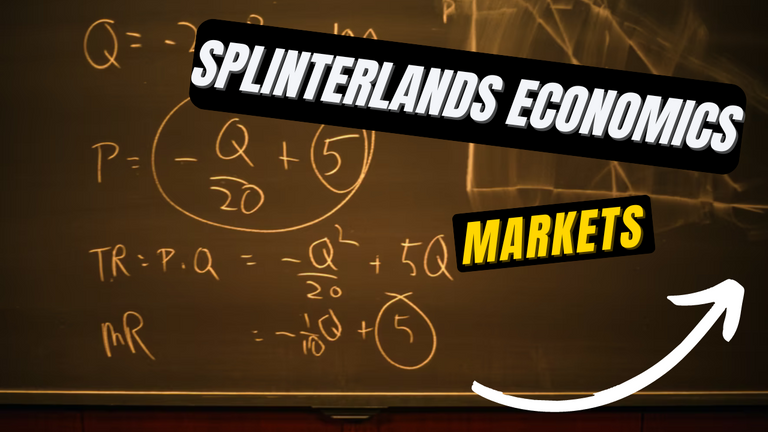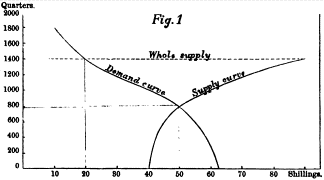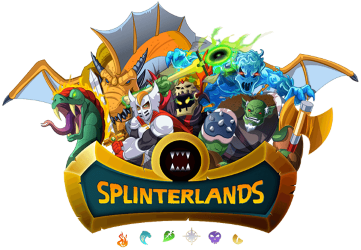Splinterlands Economics: Markets
Hello everyone! We are back again today with another edition of Splinterland Economics - a series in which we introduce a basic economic concept and then apply it to Splinterlands. If this is your first time reading, just to tell you a little bit about myself: my day job is in an unrelated area but I consider myself a little bit of economics nerd - I read a little (or maybe way, way) more news than I should, double majored in econ, and am obsessed with optimization. I love the way Splinterlands is equal parts card game and resource allocation game. My goal with these articles is to share a little bit of what I know with you all.
Our subject today is a key concept in economics and is necessary in order to have the open exchange of goods and assets. You have almost certainly already participated in the topic of this post, though depending on your background you may or may not have been familiar with exactly how all of the background pieces fit together. Today, we'll be talking about markets!

What is a market?
A market facilitates the exchange of goods and services between people (or entities). A market provides a place for buyers and sellers of a good to determine a "fair" price and conduct their transactions. If you have purchased Splinterlands cards, participated in the stock exchange, or even just gone to the supermarket at some point, then you have taken part in a market. While volumes could easily be written on market behaviors, today I will be mainly focusing on how markets work and their function in the economy. (I do intend to look a little deeper into the gritty details in a future post, so if that is something you would be interested in reading then be sure to give me a follow!)
In any market there are two sides - supply (provided by sellers) and demand (provided by buyers). While the specific mechanics of each market will vary, you can think of it as though all of the sellers lining up according to how much they are willing to sell for, all of the buyers line up according to how much they are willing to buy for, and the market price is wherever those two prices intersect - this intersection is called the equilibrium point, and usually determines both the price of the item and the quantity which is bought and sold. They generally do this by allowing sellers to offer their goods for sale at an asking price, and/or allowing buyers to offer to purchase goods at a bid price.
Markets help to make the overall economy more efficient because they ensure that the producers who are most able to produce goods (and therefore do it the most cheaply) are able to sell their production, and that the buyers who want goods the most (and are therefore willing to pay the most) are able to purchase the items they are looking for. By making the search process quicker and easier and occasionally (though not always) also providing a middleman service, markets make it simpler to conduct transactions.
How do we apply it to Splinterlands?
Splinterlands has a very interesting collection of markets, partly because of financial regulations and partly because of the complexity of the game ecosystem. If you click on the card market in-game, for example, you can see cards listed in your browser as well as no less than THREE other marketplaces operated by third parties offering various different combinations of incentives and features.
Splinterlands markets are not limited to just cards - there are also an ever-increasing number of exchanges where SPS may be bought and sold with fiat or cryptocurrencies. And for other game-related items such as land and totems, Tribaldex, Hive Engine, and even Wax provide places to exchange goods. Finally, there is also an in-game marketplace which is in development and should be coming soon.
These Splinterlands markets do come with a price, which makes sense considering the fact that they contribute to the ecosystem and take valuable development resources to build and maintain. For example, most of the card markets charge a 5% commission, and Tribaldex and Hive Engine have (very reasonable, in my opinion) deposit and withdrawal fees. However, they offer some huge benefits in return. It is much easier to put up an item for sale or to see which goods are available for purchase with a marketplace, and you avoid the risks of a peer to peer deal, where you may have to spend a lot of time searching or bargaining and have the possibility of getting scammed. Some markets also offer additional perks, such as a better interface, advanced statistics, additional features, or lower fees - if you have only ever used one marketplace, be sure to take a look around and see what other ones have to offer!
Why should we care?
Markets are very helpful in facilitating the purchase of assets. Anyone who has had to go through costly transaction fees - for example, having to pay a ridiculous gas fee on Ethereum or paying an enormous commission to a real estate agent, should be able to appreciate the value of having a low cost and efficient market. Particularly while operating in the crypto world, having a variety of markets to choose between means that there is competition for customers and that there is a greater degree of decentralization. As users of markets, understanding how they work and the purpose they serve in our favorite games gives us additional insight into how the game economy works and how the ecosystem meshes together.
Thank you so much for reading all the way to the end. Interested in seeing some more of my writing in the future? Be sure to give me a follow! In the meantime, if you'd like to see some of my recent posts:
Splinterlands Economics: Value - A look into the concept of value, and how we can apply it to our advantage in Splinterlands.
Right Place, Right Time - Using Venari Spellsmith in Battle! - Last week's battle challenge, featuring Venari Spellsmith!
Splinterlands Economics: Yield - An introduction to Yield, and how we can apply it in Splinterlands.
Thinking about giving Splinterlands a try but haven't signed up yet? Feel free to use my referral link: https://splinterlands.com?ref=bteim, and be sure to reach out to me if you have any questions!
All images used in this article are open source and obtained from Pixabay or Unsplash. Thumbnails borrowed with permission from the Splinterlands team or made in Canva.




Thanks for sharing! - @alokkumar121
